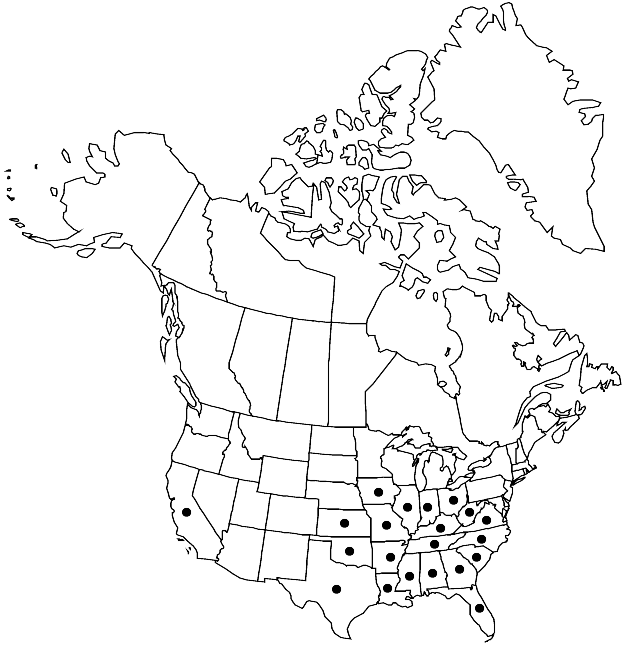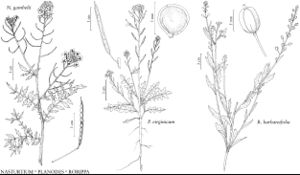Planodes virginicum
Leafl. Bot. Observ. Crit. 2: 221. 1912.
Stems simple to many from base, (0.5–)1–3.5(–5.5) dm, hirsute or puberulent basally, often glabrous distally. Basal leaves: petiole (0.3–)0.8–1.5(–2) cm; blade oblong to oblanceolate in outline, (1–)1.5–7(–10) cm × 4–20(–30) mm, margins pinnatifid to pinnatisect; lobes (4–)6–12(–15) per side, ovate or oblong to linear, margins often coarsely dentate proximally, entire or minutely dentate distally, larger distally; terminal lobe equal to or larger than lateral, margins entire or laterally 1-toothed, surfaces usually pubescent, rarely glabrate. Cauline leaves shortly petiolate; blade smaller, narrower, (lobe) margins entire. Racemes lax in fruit. Fruiting pedicels straight, (1.5–)2.5–6(–8) mm, glabrous. Flowers: sepals 1–2 × 0.5–0.8 mm, glabrous or subapically with few hairs; petals 2–3 × 0.5–1 mm; filaments 1.5–2 mm; anthers 0.3–0.4 mm. Fruits divaricate-ascending, (1–)1.5–2.5(–3.2) cm × 1–1.5 mm, slightly torulose; style 0.2–0.7 mm. Seeds orbicular or suborbicular, 1–1.2 × 0.9–1 mm; wing 0.1–0.15 mm. 2n = 16.
Phenology: Flowering Feb–Apr.
Habitat: Fields, floodplains, waste places, lawns, railroad tracks, embankments, roadsides, cultivated ground, streamsides, open woods
Elevation: 0-500 m
Distribution

Ala., Ark., Calif., Fla., Ga., Ill., Ind., Iowa, Kans., Ky., La., Miss., Mo., N.C., Ohio, Okla., S.C., Tenn., Tex., Va., W.Va., Mexico (Baja California).
Discussion
Distribution of Planodes virginicum is primarily in the southeastern and central United States (Virginia west into Kansas, south into Texas, and east into Florida). Its disjunction in southern California and northern Baja California suggests that it was introduced there. Considering the weedy nature of the species, I expect that its range extends beyond that given above.
Selected References
None.
